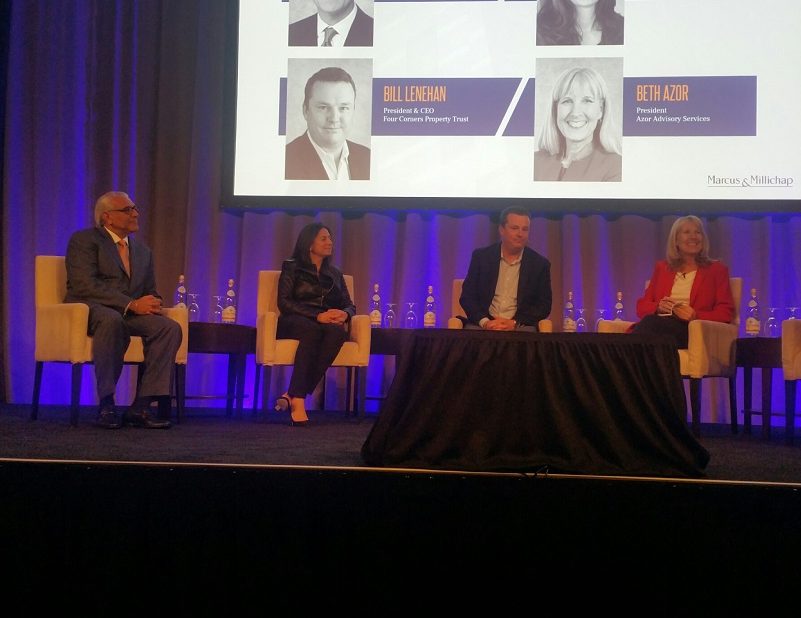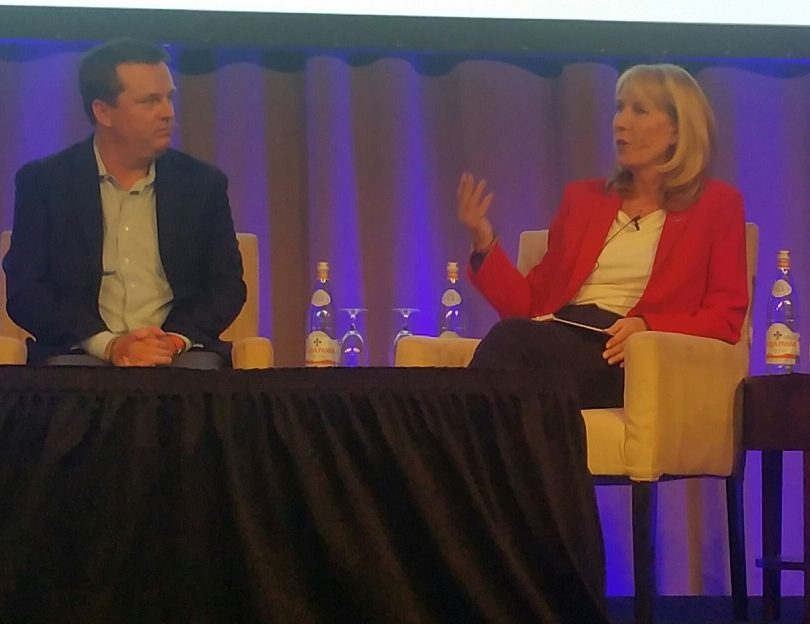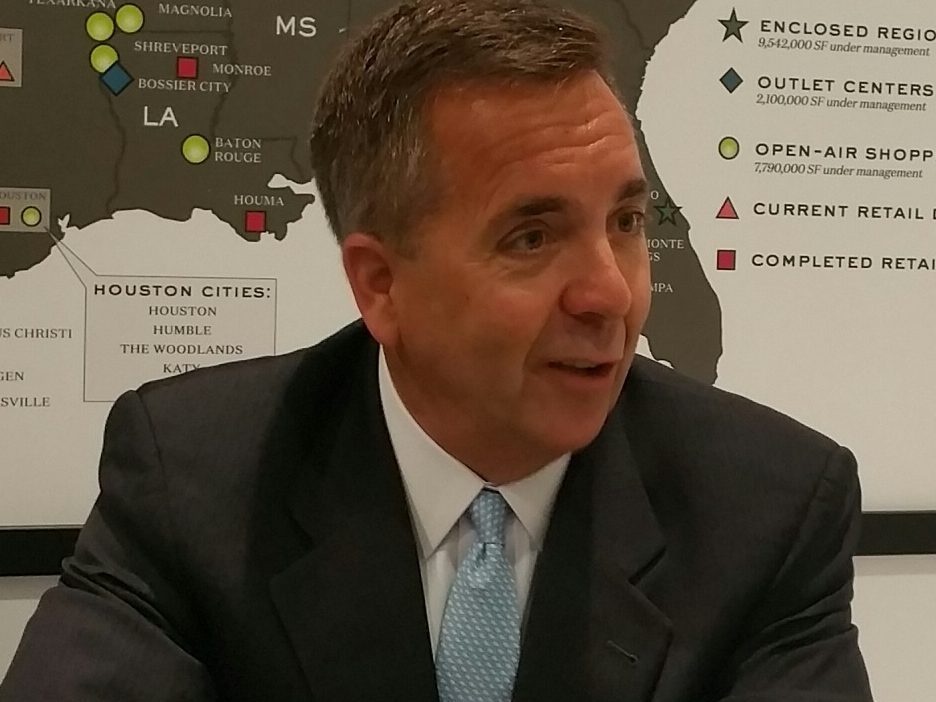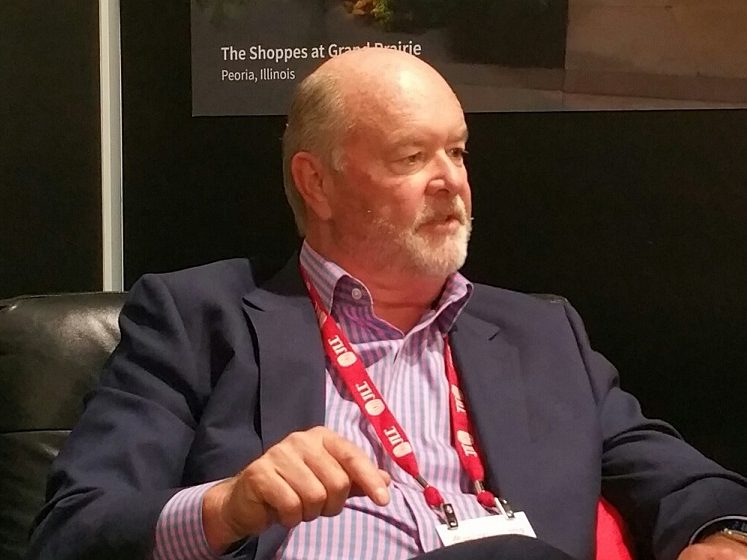The Talk of RECon 2019
A sampling of comments from the thousands of retail real estate professionals who attended ICSC's annual spring convention in Las Vegas last week.
A variety of voices from the retail sector have been heard over the past several days at RECon. They present many impressions of a multi-sided part of the economy. In public forums and in private meetings, executives and senior professionals have weighed in on the future of the industry. Here are a few impressions from the event, which concludes today.

From left: Hessam Nadji, Jami Passer, Bill Lenehan, Beth Azor at Marcus & Millichap’s Retail Trends event
Hessam Nadji offered telling statistics during Marcus & Millichap’s annual Retail Trends update, held Monday night at the Renaissance Hotel. E-commerce sales from December 2018 to April 2019 jumped 145 percent year-over-year, yet other categories benefited as well. Food and beverage sales rose 96 percent, and spending on healthcare products was up 43 percent.
Another eyebrow-raising statistic on the development side: It took from 2014 to 2019 for the market to add 263 million square feet of retail space, about as much as came online in 2007 and 2008 alone, at the peak of the last market cycle. Nadji’s conclusion: “We are not overbuilding retail anymore.”
Beth Azor, president of Azor Realty Services, on changes in consumer preferences: “The customer wants frictionless.” In a few years, half of all 7-11 stores are expected to be cashierless, she noted. “Retailers have to look at ways of doing that, and think, ‘How do I provide the customer with more time?’”
“Large deals have come back in vogue,” and in particular, large fund-level transactions in excess of $100 million, reported Will Pike, vice chairman and managing director of the net lease property group and corporate capital markets practice at CBRE. Assets with triple-net leases are attracting interest from institutional-caliber investors like REITs, sovereign wealth funds and priave investors.

From left: Lenehan and Azor
Retail space is a first-rate fit for medical office, urgent care locations and specialized healthcare facilities, contends Steve Wathen, CEO of Equity LLC. Medical locations provide customer flow that is steady without creating a tight fit for traffic. While conventional retail tenant exist in a fluid environment, healthcare companies hardly ever go out of business.
Healthcare practices offer stability, too; the same 10-year lease that is anathema to a conventional retail is welcomed by the typical healthcare provider. Moreover, the typical healthcare practice moves only 1.75 times on average during its life span.

Fred Meno
In backfilling retail space, a common challenge for owners is to overcome tenants’ resistance to the presence of non-retail uses at the center. Using it as leverage, “They’re holding landlords over a barrel,” said Fred Meno, president & CEO of asset services at The Woodmont Co.
“You’re going to have to go back to some of the tenants where there are less restrictions to negotiate non-retail uses.”
Meno on what’s caused an estimated 60 percent of retail bankruptices over the past five years: “Too much debt that was place on them by leveraged buyouts.”

Greg Maloney
Greg Maloney, CEO of JLL Retail, on what to expect in the next few years: “The all-retail environment is going to go away, and it’s going to be mixed-use. We’re going to have to engage that consumer in different ways than we have in the past. It used to be a slow crawl; now it’s a fast train.”

Rick Rizzuto
Over the next six to eight months, Rick Rizzuto of Transwestern’s retail practice expects to step up his collaboration with his colleagues in the industrial practice. Rizzuto, a vice president and leasing specialist in the firm’s Florham Park, N.J., office, said on Tuesday that industrial specialists will assist him in advising his retail clients on their needs for space.Some of his clients need to expand distribution space to meet demand from online customers while also keeping Main Street stores in affluent locations, yet make these deals pencil out. Rizzuto’s solution: Keep the Main Street presence but reduce the pricey footprint to offset the cost of adding less expensive distribution space.







You must be logged in to post a comment.